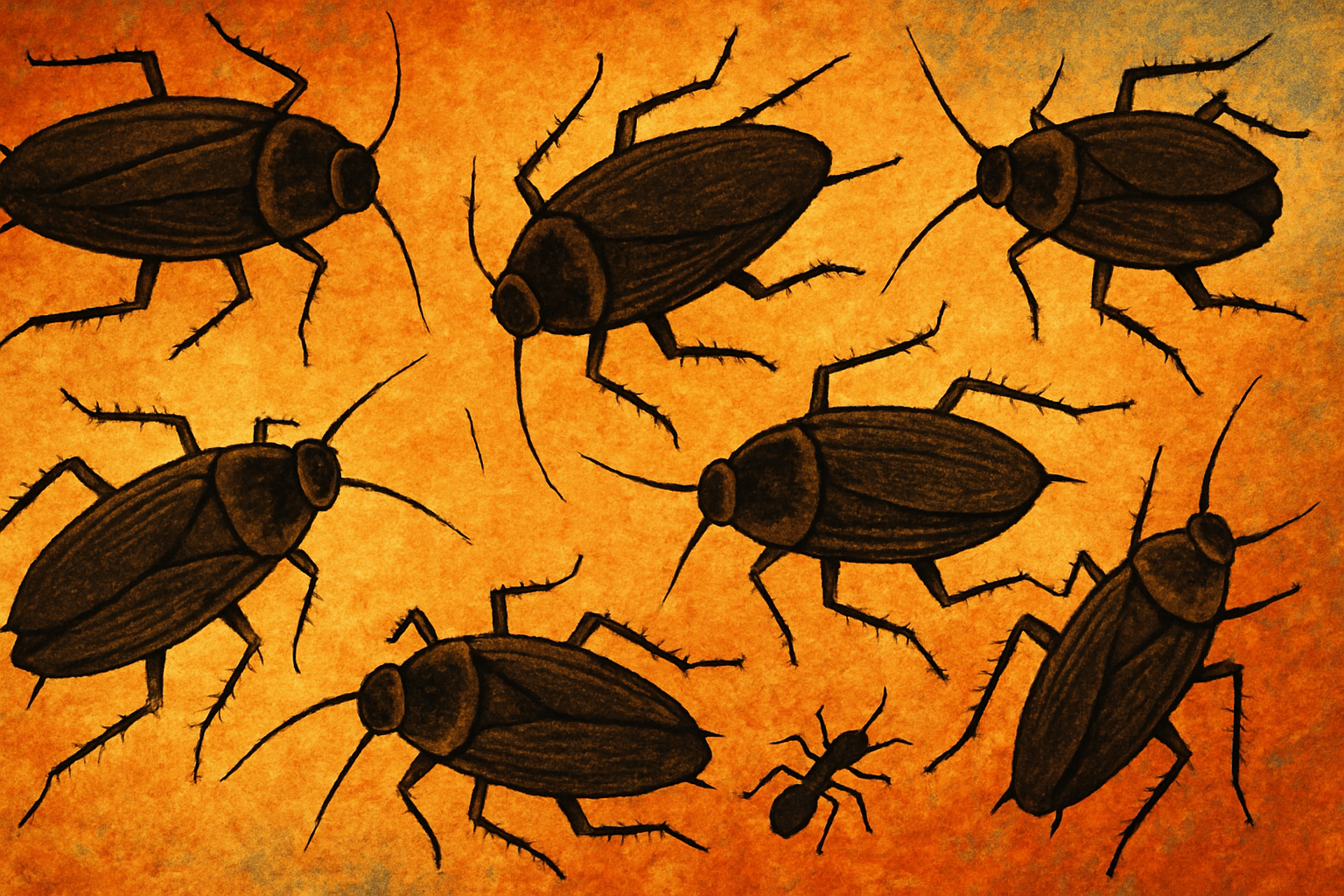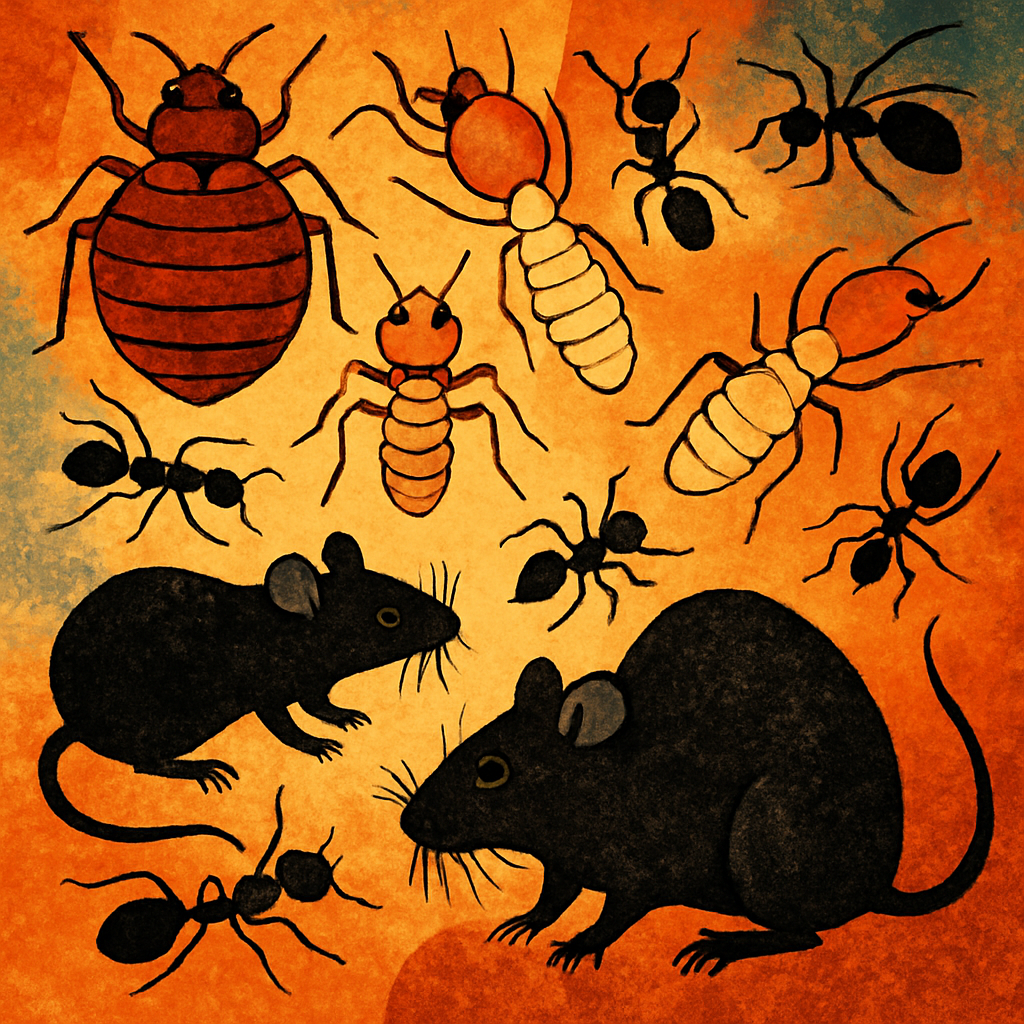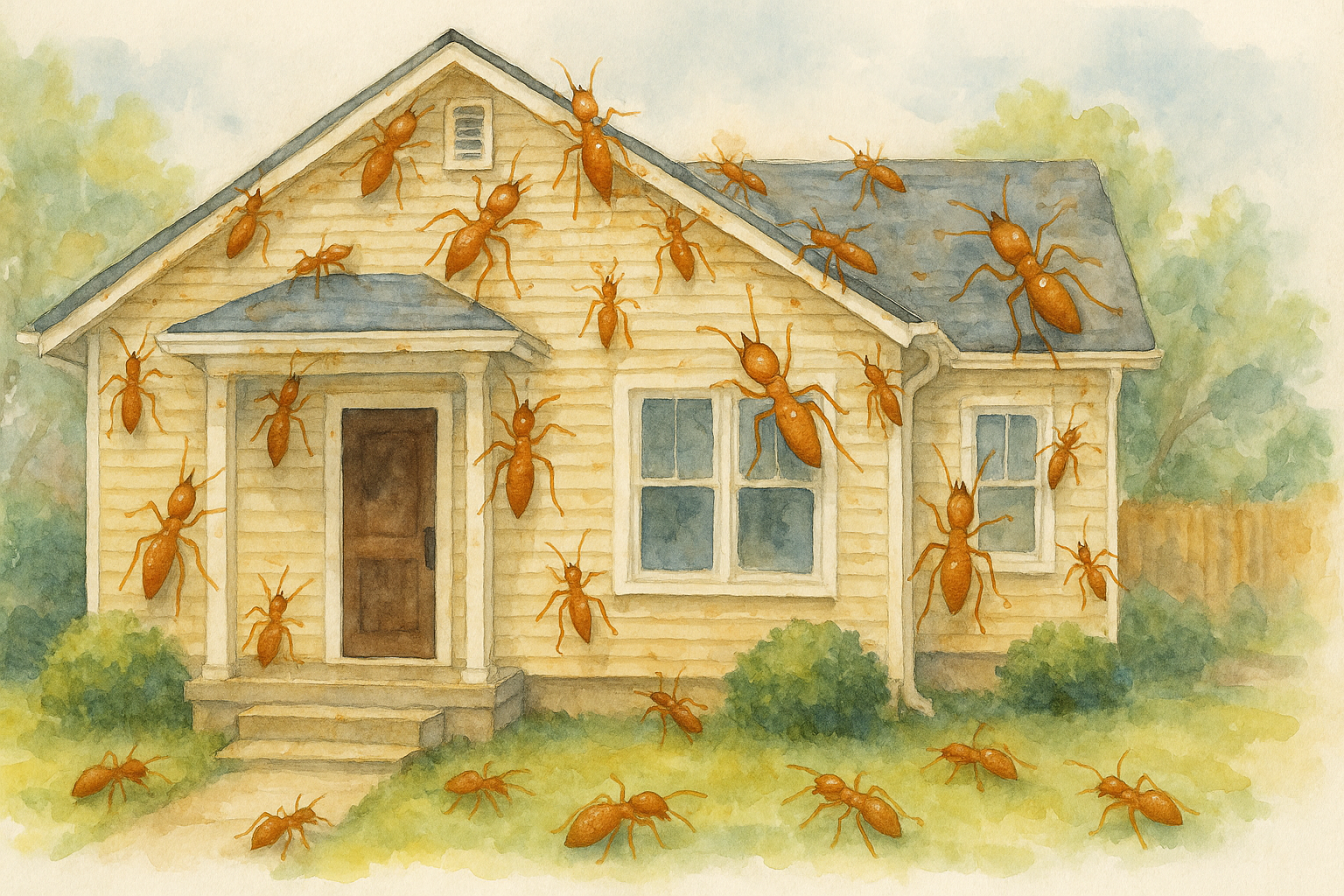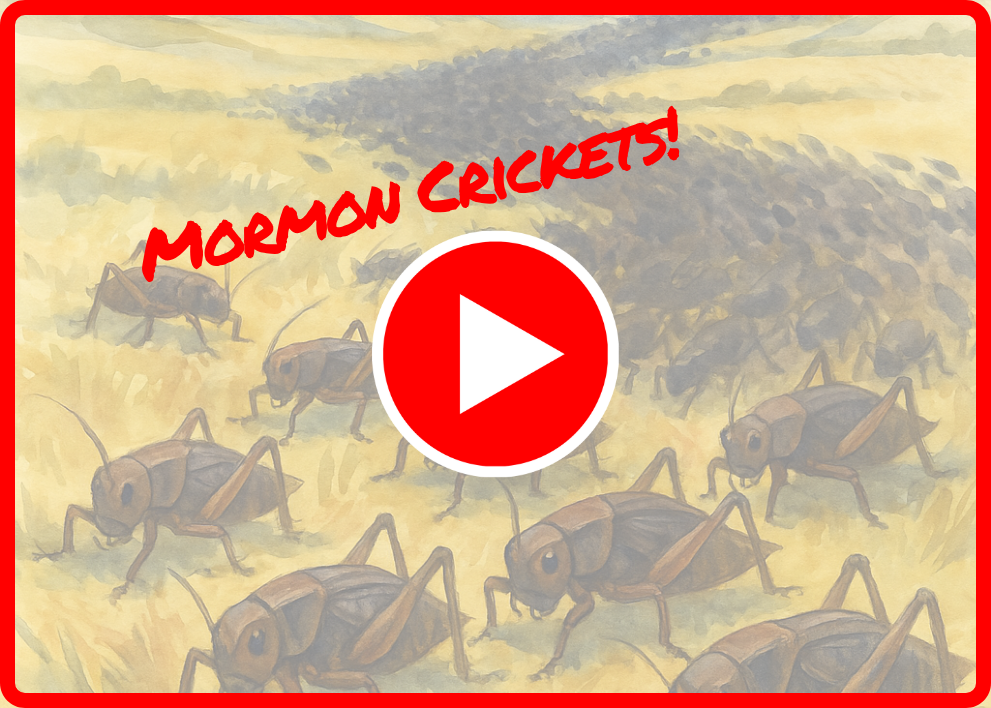Hobo spiders (Tegenaria agrestis) and wolf spiders (Lycosidae) are two common spiders found in North America, especially in the Pacific Northwest, and including Idaho. Despite their similar appearances, these two spider species have notable differences in their physical characteristics, behaviors, and habitats. Here’s a guide on how to differentiate between the two:
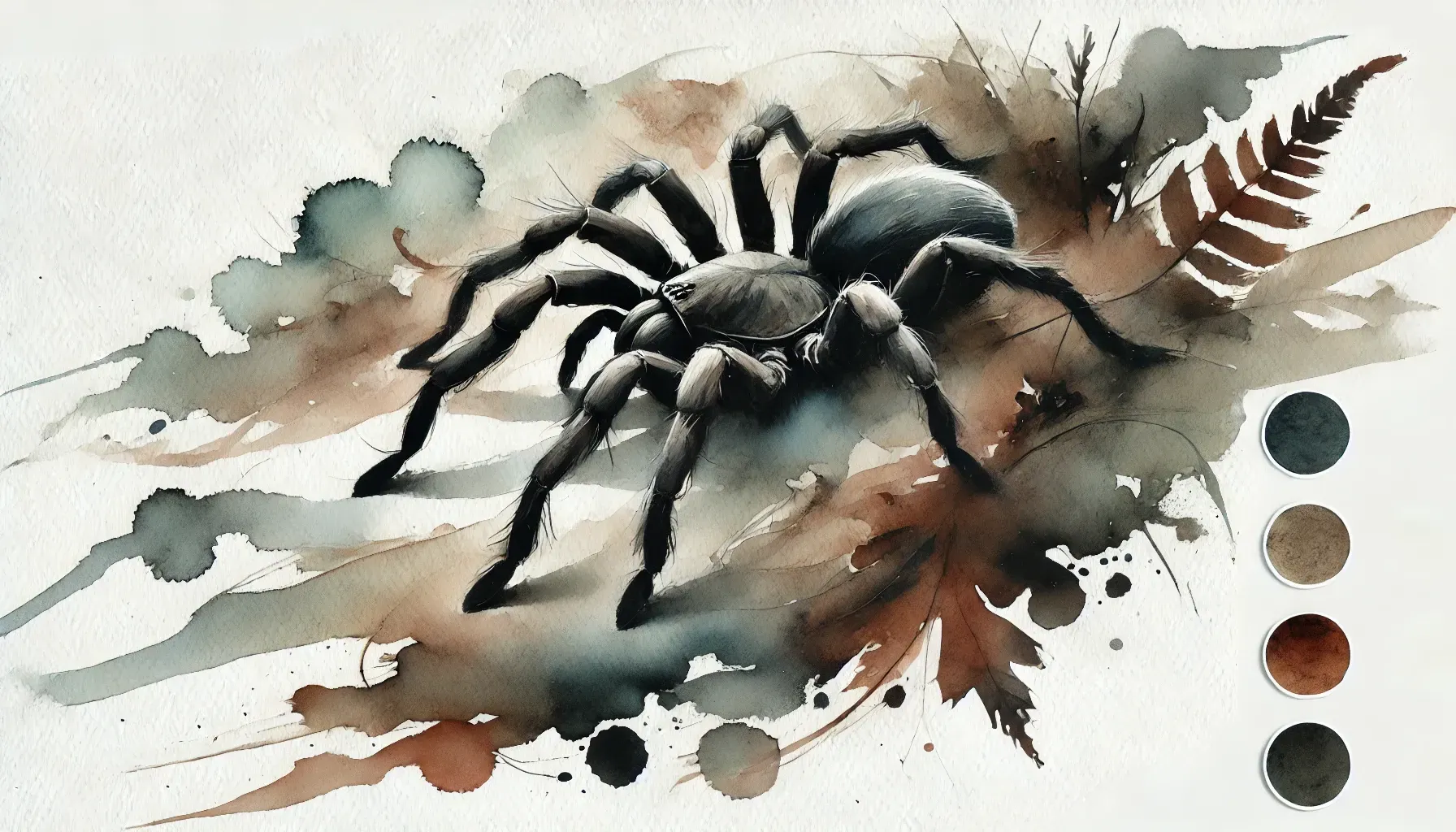
1. Appearance
- Hobo Spider: The hobo spider is often light to medium brown with chevron markings on its abdomen. Its body size ranges between 1 to 1.5 cm, with legs that are relatively unremarkable compared to other spiders. The most distinctive feature of the hobo spider is its lack of banding on the legs, which can help differentiate it from similar spiders.
- Wolf Spider: Wolf spiders are typically larger than hobo spiders, ranging from 1 to 3 cm in body length. They are usually brown, gray, or black with distinct body markings, often including stripes or spots. A defining characteristic of wolf spiders is their large, forward-facing eyes, which they use for hunting. Unlike hobo spiders, wolf spiders have more prominent leg patterns, often with banding or striping (Vetter et al., 2003).
2. Behavior and Habitat
- Hobo Spider: Hobo spiders are funnel web weavers and are primarily found near the ground in dark, secluded places such as basements, crawl spaces, and woodpiles. They use their funnel-shaped webs to catch prey rather than hunting actively. Hobo spiders are often misidentified and mistakenly feared for their supposedly necrotic bites, though studies show that their venom has minimal effects on humans (Gaver-Wainwright et al., 2011).
- Wolf Spider: Wolf spiders, on the other hand, are active hunters that do not rely on webs to capture prey. They are often found in open areas like fields, forests, and sometimes inside homes. They use their excellent vision to stalk and pounce on prey. Wolf spiders tend to roam freely and may be found running across floors or walls when indoors.
3. Venom and Medical Importance
- Hobo Spider: Hobo spiders have been mistakenly associated with necrotic bites similar to those of the brown recluse. However, recent research has largely debunked this, showing that hobo spider bites are unlikely to cause significant harm to humans (Vetter et al., 2003).
- Wolf Spider: Wolf spiders are generally harmless to humans. While they can bite if provoked, their venom is not medically significant and typically causes only mild irritation or swelling at the bite site. Wolf spiders are often confused with more dangerous species like the brown recluse, but they are far less harmful (Campbell et al., 1987).
4. Eyes and Hunting Style
- Hobo Spider: Hobo spiders have eight eyes arranged in two horizontal rows, which are relatively small compared to wolf spiders.
- Wolf Spider: Wolf spiders are known for their distinctive eye arrangement, with two large forward-facing eyes and several smaller eyes. This gives them excellent night vision, making them effective nocturnal hunters (Framenau & Baehr, 2018).
Conclusion
While hobo spiders and wolf spiders may look similar at first glance, their differences in body size, behavior, eye arrangement, and venom make them distinct. Understanding these differences can help avoid confusion and unnecessary fear regarding their potential danger.
Works Cited
Vetter, R. S., Roe, A. H., Bennett, R., Baird, C., Royce, L., Lanier, W. T., Antonelli, A., & Cushing, P. E. (2003). Distribution of the Medically-implicated Hobo Spider (Araneae: Agelenidae) and a Benign Congener, Tegenaria duellica, in the United States and Canada. Journal of Medical Entomology, 40(2), 159-164.https://academic.oup.com/jme/article/40/2/159/885764?login=false.
Gaver-Wainwright, M. M., Zack, R., Foradori, M., & Lavine, L. (2011). Misdiagnosis of Spider Bites: Bacterial Associates, Mechanical Pathogen Transfer, and Hemolytic Potential of Venom from the Hobo Spider, Tegenaria agrestis (Araneae: Agelenidae). Journal of Medical Entomology, 48, 382-388.https://academic.oup.com/jme/article/48/2/382/893951?login=false.
Campbell, D., Rees, R., & King, L. (1987). Wolf Spider Bites. Cutis, 39(2), 113-114.https://pubmed.ncbi.nlm.nih.gov/3829717/.
Framenau, V., & Baehr, B. (2018). The Wolf Spider Genus Artoria in New South Wales and the Australian Capital Territory, Australia (Araneae: Lycosidae, Artoriinae). Evolutionary Systematics.https://evolsyst.pensoft.net/article/30778/.
Contact Today For $100 Off Your Initial Service!
⭐⭐⭐⭐⭐
Backed by our Bigfoot Guarantee!
What Customers Are Saying:
"Everyone from Bigfoot is awesome. They are always on time. They're extremely thorough. I've not had a single issue in the two years they have been treating our home. Well worth it!"
T. Potter | Meridian, ID

